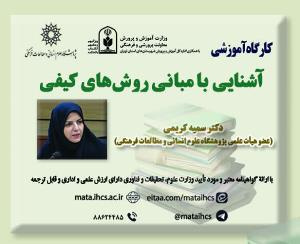اصالت ابتنای حسّی (مقاله پژوهشی حوزه)
درجه علمی: علمی-پژوهشی (حوزوی)
آرشیو
چکیده
یکی از اصول و قواعدی که برخی از علما، به ویژه فقها، در روند استنباط امور نقلی از آن بهره می برند، قاعده ترجیح حس در محتمل الحس و الحدس یا اصالت حس است. طبق این نظر در دوران بین حسی یا حدسی بودن یک امر، درجایی که اعتبار به حسی بودن امر است نه حدسی بودن آن، جانب حس ترجیح داده شده و بر این اساس، آثار حسی بودن بر آن امر مترتب شده و ملتزم به لوازم آن می گردد. قائلان در اعتبار این اصل به ادله ای چون بنای عقلا، ظاهر حال، ظاهر کلام به ضمیمه وثاقت راوی و نیز عدم اعتناء به شک تمسک می کنند. در مقابل عده ای نیز این اصل را رد کرده و به صورت اجمال آن را بی اعتبار و بی پشتوانه از دلیل می دانند. نویسنده در این پژوهش بنیادی- کاربردی و با روش کتابخانه ای و رجوع به آثار، معروف ترین کاربست های این قاعده در نزد قائلان آن را ارائه می دهد، سپس در توصیف و تحلیل ادله هر دو طرف در پذیریش و عدم پذیرش این اصل به صورت تفصیلی، به این نتیجه می رسد که ادله مورد استناد بر این اصل، ناتمام بوده و این ترجیح خالی از پشتوانه و دلیل معتبر است و قول به عدم اعتبار آن مصیب به واقع است.Principality of Sensualism
One of the principles and rules that some scholars, especially jurists, use in the process of inference of scriptural (textual) matters is the principle of preference of sense ( ḥis ) in Muhtamal al-Ḥis (“what is possible to sense”) and Muhtamal al-Ḥadas (“what is possible to guess”(, or the principality of sense. According to this opinion, in circulation between sensual of conjectural of a matter, where validity is due to the sensibility of the matter, not its conjecture, the side of sense is preferred. Based on that, the effects of sensibility are arranged on that matter and become bound to its necessities. Those who believe in the validity of this principle rely on evidence such as the intellectuals’ attitude, apparent state of affairs, the apparent of the word within the authenticity of the narrator, and also ignoring the doubt. On the other hand, some scholars reject this principle and consider it invalid and unsupported by reason. This basic-applied study used the book-reading method and references to some works. By describing and analyzing the evidence of both sides in accepting and not accepting this principle in a detailed manner, and by presenting the most famous applications of this principle in the eyes of those who believe in it, the writer comes to the conclusion that the evidence based on this principle is incomplete, this preference is unsupported by valid reason, and the opinion of the invalidity of that is closer to reality.







